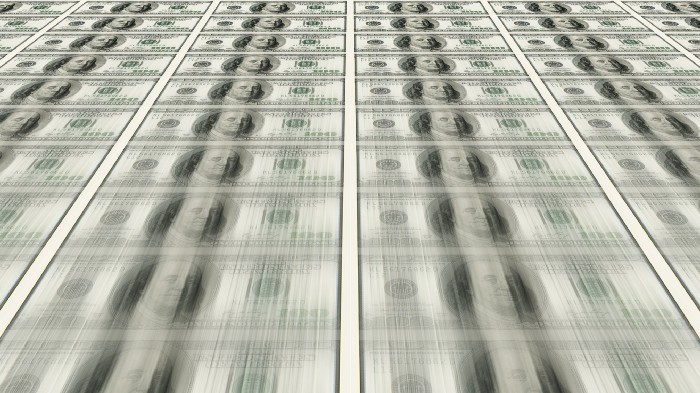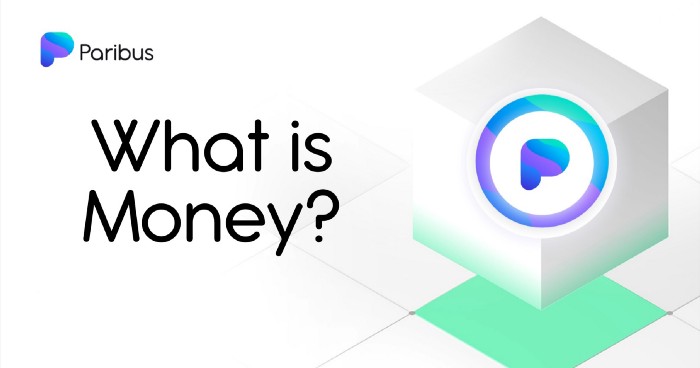It seems like an obvious question but the answer is somewhat more complex than you may at first have thought. Money isn’t just the jiggle, jiggle in your piggy bank, or the folds in your pocket. There are at least 5 different types of money in an economy, often referred to as M0, M1, M2, M3, and M4.
M0 — M4 refers to the type of money that is in circulation at any given time, and understanding these concepts helps to explain why the US Dollar is still in short supply. At a time when the dollar should be weak due to unprecedented monetary inflation by the Federal Reserve, it’s actually outperforming every other major currency.
M0 is commonly referred to as base money. This is the money that the central bank, such as the US Federal Reserve, creates or prints. When this money enters circulation, such as through buying securities or as direct payments to the public in times of crisis, it can then go on to create other types of money.
When base money enters the banking system it can either remain static or be multiplied depending on what type of account it’s deposited into. If the account is highly liquid, such as a current or checking account, the original money remains in the same quantity as base money, but it’s now referred to as M1.

M1 starts to become complicated due to the way the modern fractional reserve banking system works. We looked at this in a previous article [https://blog.paribus.io/how-does-finance-work-a122fa99e0ce], but to summarize the main point, banks don’t have to keep all the money that’s deposited with them. If that money is held in a less liquid account such as a savings account it can be used to secure debt.
In this context liquidity refers to how easily accessible the money is and less liquid accounts usually impose a time delay to access the funds within them. The reason for the delay is that the funds don’t exist in full anymore in the account and this allows a buffer for the bank to replace the money in time for it to be drawn down.
In the US, regulated banks only need to keep 4% of funds in reserve for every loan they make. So if someone deposits $100 into a savings account it means the bank can now use over 90% of that deposit to secure new loans. This creates additional money, which, if deposited into another checking account is added to the total of M1 money.
Whereas M0 is the base money that the central bank has created from nowhere, broadly speaking M1 is the total of base money plus any additional money that regulated banks have created that’s also stored in highly liquid accounts. M2 is the combined total of M1 plus any money that has been deposited into less liquid accounts, such as savings accounts.
In the US the main measurements of money supply and circulation are M1 and M2, however, in other countries such as the UK, the central bank also takes into account M3 and M4. The latter two types of money refer to more illiquid forms such as mutual funds, commercial papers, and assets outside regulated banks.
Normally within one country, the central bank will move between monetary tightening and easing by hiking or cutting interest rates. They do this to either reduce the amount of money that banks are creating in new loans or incentivize the creation of new money in loans.

When the money supply is high, such as when M1 is rising faster than M0, it indicates that banks are creating lots of new money in the form of loans. This in turn means that consumers will usually spend that money on products and increase the demand for goods. When an economy is in recession this is a good thing, but when there’s high inflation it’s a bad thing as it drives prices higher if demand outstrips supply.
As with all things, it’s not a clear-cut, black-and-white situation. There’s plenty of nuance such as supply-side velocity. If there’s lots of money in the economy and no problems with supply this doesn’t cause prices to rise, in fact, it expands the economy and makes it healthier. This is why regulated banks are allowed to create money from thin air, it’s a delegation of the powers of the central bank to help the economy expand.
When there are limits on the supply of goods and lots of money in the economy it usually causes prices to increase, or inflate. This is happening dramatically in many economies, especially the UK and Europe due to the energy crisis they are facing as winter approaches.
Recently in the US too there’s significant inflation due mainly to the costs incurred by imposing sanctions on Russia, which in turn increased the cost of fuel and commodities. However, whereas other countries’ currencies are losing value due to inflation, the US Dollar is continuing its parabolic rise in strength. This is due to the fact the US Dollar is the world reserve currency.
Over 80% of all international trade takes place using the US Dollar and despite the increase in domestic money printing, there’s a supply issue for foreign countries in getting enough US Dollars. As global prices have increased so has the demand for US Dollars from the rest of the world. As its strength increases it also weakens other currencies and becomes an ever-increasing spiral.
The result is that US exports become more expensive, transnational trades that are conducted in US Dollars become more expensive for everyone except the US, and imports to the US become cheaper. Understanding the role that the US Dollar plays in global trade also goes some way to explaining why regulators are so concerned with Dollar denominated stable coins, which is a subject we’ll look at later in the week.
Overall, money isn’t just the cash you have in your hands. It can be created by central banks and multiplied by regulated banks. In times where money no longer needs to be backed by anything physical, we’ve yet to see how central banks and regulators manage to stabilize everyone’s finances in an ever more unstable world.
The beauty and promise of DeFi is that it allows each project to create its own monetary policy. Tokens can be limited, deflationary, or inflationary. Moreover, the choices between each approach can be voted for and implemented by token holders rather than dictated by central banks.
Join Paribus-
Website | Twitter | Telegram | Medium | Discord
- Coinsmart. Europe’s Best Bitcoin and Crypto Exchange. Click Here
- Platoblockchain. Web3 Metaverse Intelligence. Knowledge Amplified. Access Here.
- Source: Plato Data Intelligence: Platodata.ai

